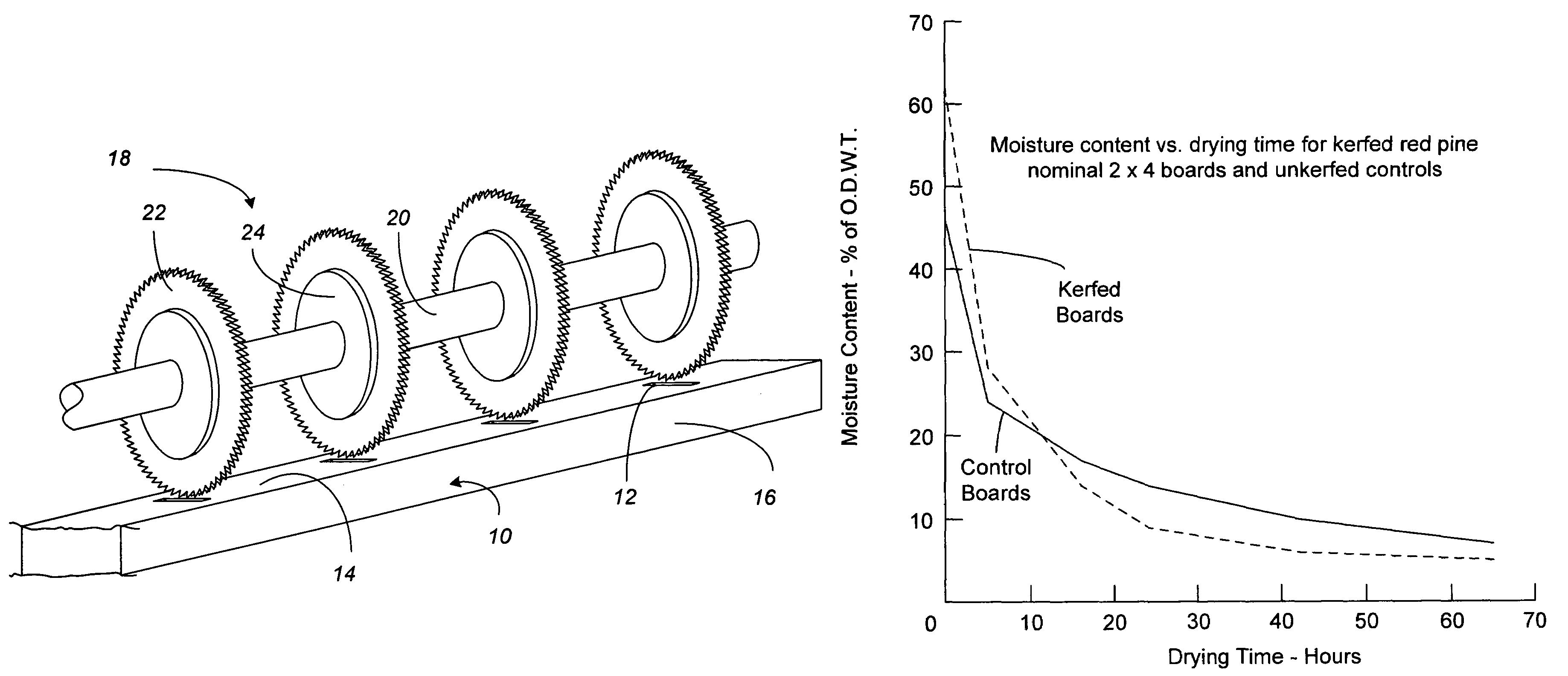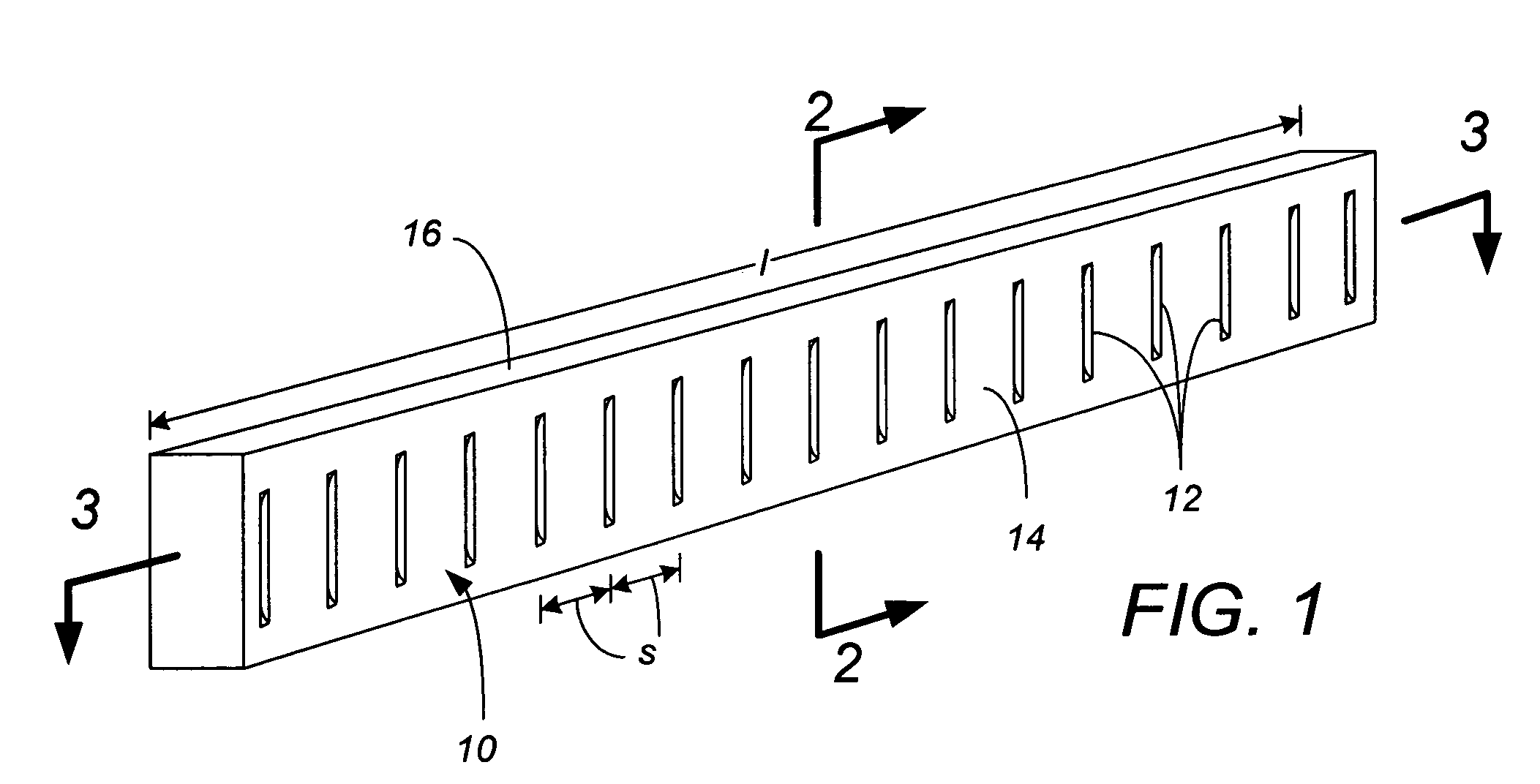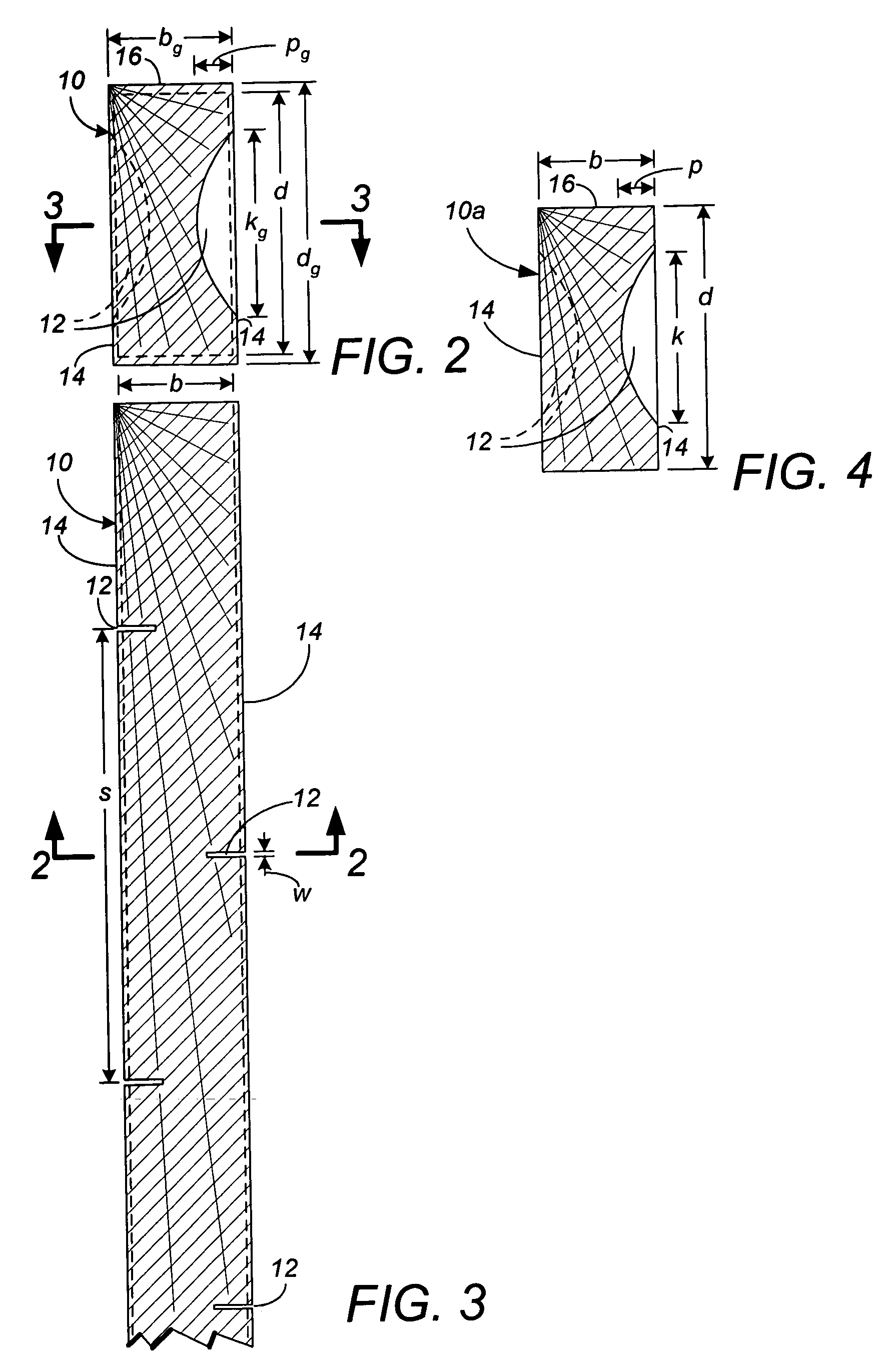Stability-kerfing of green lumber to obtain improvements in drying and future utilization
a technology of stability and kerfing, which is applied in the direction of combination process drying, drying using pre-solid treatment, lighting and heating apparatus, etc., can solve the problems of affecting the rapid and quality drying of softwood dimension lumber, requiring a higher price, and significant equipment use, so as to improve the drying speed and improve the stability of the board, the effect of enhancing the structural capacity
- Summary
- Abstract
- Description
- Claims
- Application Information
AI Technical Summary
Benefits of technology
Problems solved by technology
Method used
Image
Examples
example 1
[0046]Forty red pine boards, 20 controls and 20 stability-kerfed as depicted in FIGS. 1-4, were dried as one charge in a steam heated experimental lumber dry kiln. Sixteen of the full length boards, 8 stability-kerfed and 8 controls, (all boards≅100 inches long) served as sample boards to be weighed periodically during the kiln run. The dry bulb temperature was maintained at 192° F. throughout the kiln run while the wet bulb temperature tracked at about 173° F.
[0047]FIG. 10 compares drying rates for stability-kerfed and controls. Accelerated drying due to stability-kerfing is readily apparent. Stability-kerfed boards, even though higher in initial average MC, reached 10% MC in about 23 hours while for the controls this required over 41 hours. This stability-kerfing design created a 45% reduction in the time required for reaching a highly desired level of final MC. The 10% average MC is in good agreement with the equilibrium moisture content (EMC) the lumber will seek during subseque...
PUM
 Login to View More
Login to View More Abstract
Description
Claims
Application Information
 Login to View More
Login to View More - R&D Engineer
- R&D Manager
- IP Professional
- Industry Leading Data Capabilities
- Powerful AI technology
- Patent DNA Extraction
Browse by: Latest US Patents, China's latest patents, Technical Efficacy Thesaurus, Application Domain, Technology Topic, Popular Technical Reports.
© 2024 PatSnap. All rights reserved.Legal|Privacy policy|Modern Slavery Act Transparency Statement|Sitemap|About US| Contact US: help@patsnap.com










